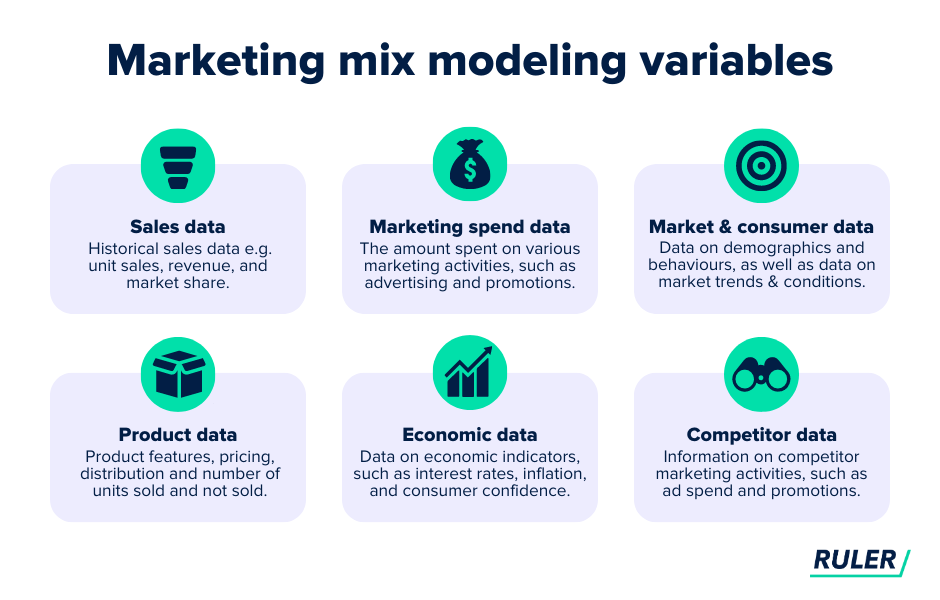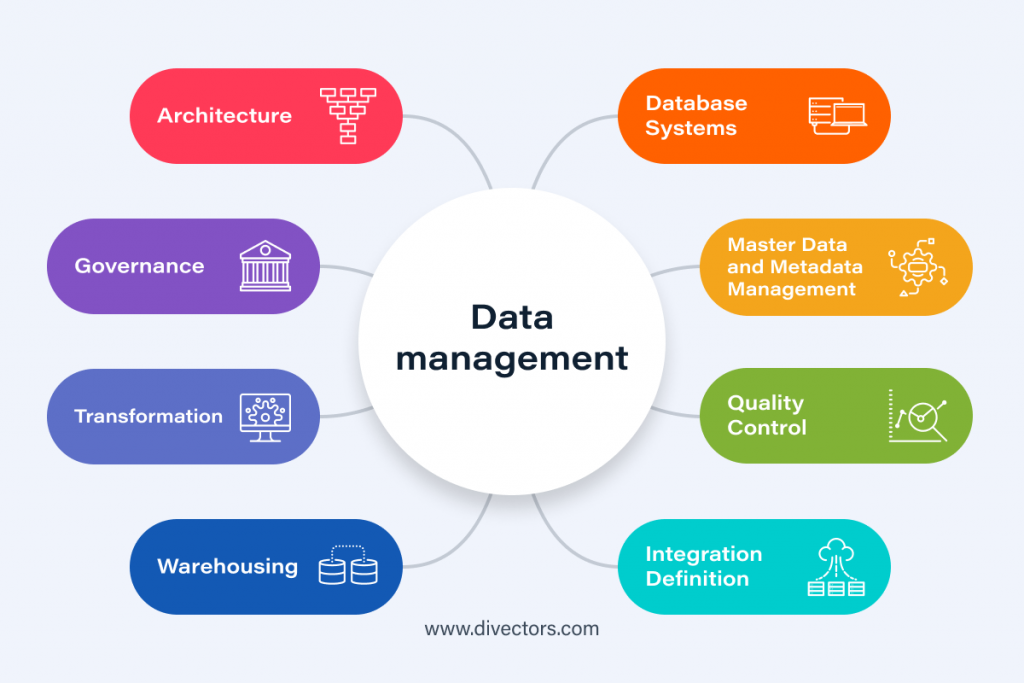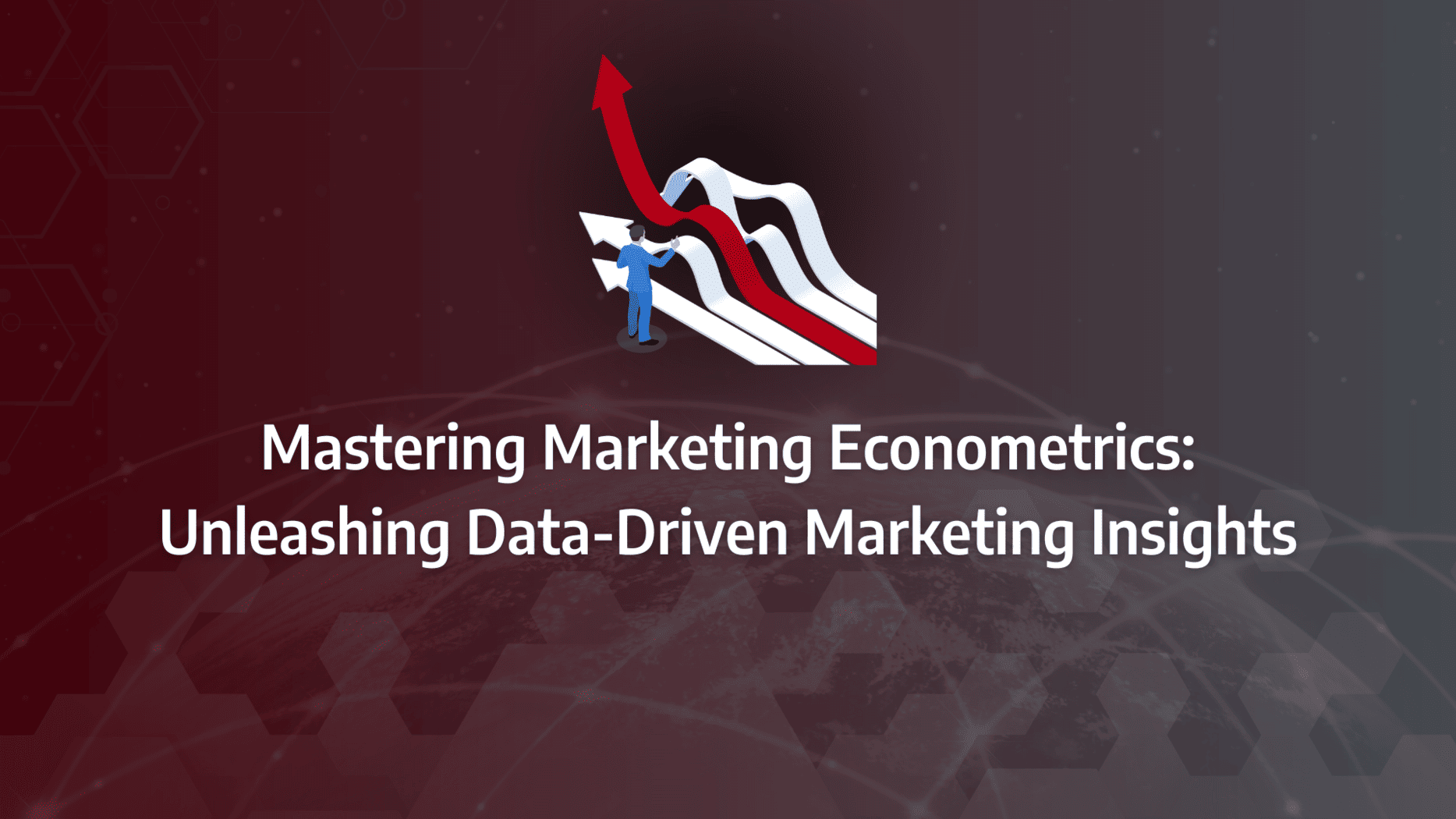Understanding and predicting consumer behaviour is more critical than ever. But with so much data at your disposal, how can you ensure you’re making the most informed decisions? The answer lies in mastering marketing econometrics—a powerful approach that allows you to dive deep into your data, uncovering patterns and insights that drive success.
This guide will walk you through the essentials of marketing econometrics, from the foundational concepts to the specific techniques you need to get started. You’ll learn how to apply econometric models to your marketing strategies, ensuring your decisions are not just data-informed, but data-driven
- Understand the Core of Marketing Econometrics: Grasp the essential concepts and importance of econometrics in making data-driven marketing decisions.
- Apply Econometric Modelling Techniques: Learn how to implement key econometric models, including linear regression and time series analysis, to optimise your marketing efforts.
- Step-by-Step Implementation Guide: Follow a clear, step-by-step process to integrate econometric models into your marketing strategy, from data preparation to result interpretation.
- Overcome Common Challenges: Identify potential hurdles such as data quality issues and model overfitting, and adopt best practices to navigate these challenges effectively.
- Leverage Advanced Tools: Discover the best tools and software for conducting marketing econometrics, and select the right one for your specific needs.
How can I use econometrics to improve my marketing ROI?
Marketing Mix Modelling (AKA marketing econometrics)
One of the most powerful applications of econometrics in marketing is Marketing Mix Modelling (marketing econometrics). This tool is essential for evaluating Return on Investment (ROI) from various marketing investments. By modelling all marketing investments through marketing econometrics, businesses can achieve optimal budget allocation. For instance, marketing econometrics can determine the cost-effectiveness of television advertising compared to radio or internet advertising. It also helps companies decide whether to allocate more resources to hiring sales personnel or to advertising efforts.
Marketing econometrics, also referred to as Mix Marketing Model, measures the impact of different marketing efforts on sales. It provides insights into how much each marketing input contributes to sales and the optimal amount to spend on each input. In terms of ROI, marketing econometrics is unmatched in determining the effectiveness of marketing inputs.

Demand Forecasting
Another vital application of econometrics in marketing is demand forecasting. Econometrics can illustrate how various factors, such as the increase in working women in the U.S., contribute to the growth of industries like the restaurant sector. Other contributing factors might include rising incomes and increased car ownership.
Demand forecasting using econometrics reduces the risks associated with business activities and aids brands in making informed decisions. By understanding different variables, businesses can more accurately forecast their industry’s future.
Techniques in Econometric Modelling
Several advanced techniques are employed in econometric modelling, including:
- Cross-sectional time-series analysis
- Time-series analysis
- Structural equation modelling
- Markov-chain analysis
- Input-output analysis
- Multiple regression
These methods, along with other mathematical and statistical tools, enable the creation of robust econometric models.

What Matters Most?
From our experience, long-term brand building far outweighs the short-term focus on sales activation, a truth often revealed through econometric models that highlight how brand effects compound over time. Clients often discover that creative, emotional advertising is not just a luxury but a necessity, with econometrics proving its critical role in sustaining long-term profitability. We have also seen how using econometrics to debunk entrenched myths about marketing effectiveness within an organisation can lead to more informed, impactful strategies, challenging assumptions and reshaping priorities for better outcomes.Get In Touch
What key metrics should I include in my marketing benchmarks?
Marketing econometric models frequently incorporate benchmark performance statistics, providing a robust framework for comparison against industry standards and competitors. These benchmarks are essential metrics that brands use to evaluate their performance, identify competitive advantages, and pinpoint areas needing improvement. Understanding these benchmarks is crucial for any brand aiming to optimise its strategies and enhance its market position.
Benchmarking through marketing econometrics in marketing involves several critical metrics:
- Brand Recognition: The percentage of the target market that recognises the brand symbols compared to rival brands.
- Brand Recall: The percentage of the target market that can remember the brand when prompted with a product category.
- Top of Mind: The percentage of the target market who can identify the brand first when prompted with a product category.
- Customer Loyalty: The frequency with which customers repeatedly purchase from the same brand, indicating loyalty within the industry.
- Customer Satisfaction: The percentage of customers who are satisfied with the brand, compared to the competition.
- Product Performance: A measure of the product’s merit based on various performance metrics.
- Ratings: Customer reviews and ratings that provide insight into the product and service quality.
- Market Share: The percentage of total industry sales within a product category that the brand captures.
- Customer Perception: How customers perceive the brand within the industry, for instance, which hotel is deemed more reliable.
- Share of Wallet: The percentage of spending within a product category that customers allocate to the brand.
- Customer Acquisition Cost: The cost of acquiring a new customer compared to the industry standard.
- Customer Retention Rate: The percentage of customers that the brand retains over a specific period.
- Customer Lifetime Value: An estimate of the total amount a customer will spend on the brand throughout their relationship.
- Price: Benchmarking the brand’s pricing against competitors to optimise pricing strategies.
- Costs & Margins: Benchmarks for profitability and efficiency, such as cost per unit, which is crucial in a price-competitive market.
- Conversion Rate: The percentage of visitors to a location who take up an offer.
- Reach: The percentage of the target audience that the brand can reach with its marketing messages.
- Engagement: Measures of customer engagement, such as the amount of time they spend on the brand’s website.
The Importance of Benchmarking
When brands understand key performance statistics, they gain a clearer picture of their industry position and can make informed decisions to enhance performance. Benchmarking enables brands to:
- Set performance expectations
- Understand their performance relative to competitors
- Identify areas needing improvement
- Track performance and implement strategic changes
- Develop standard metrics for measuring performance
- Foster a culture of continuous improvement
- Gain insights into customer wants and expectations
By leveraging marketing econometrics, brands can benchmark effectively, ensuring they measure the right data and avoid investing in activities that do not provide a return on investment.
Benefits of Benchmarking
Benchmarking a brand’s performance offers a multitude of benefits:
- Setting Performance Expectations: Establish clear and realistic performance targets.
- Competitive Analysis: Gain a better understanding of how your brand is performing relative to competitors.
- Identifying Improvement Areas: Pinpoint specific areas that require enhancement.
- Performance Tracking: Monitor progress and implement strategic changes accordingly.
- Developing Standard Metrics: Create standardised metrics to consistently measure performance.
- Fostering Continuous Development: Build a company culture focused on ongoing improvement.
- Understanding Customer Expectations: Gain deeper insights into customer needs and expectations.
When brands effectively benchmark, they can identify critical opportunities and avoid the pitfalls of measuring irrelevant data. This ensures that investments are directed towards activities that provide a tangible return on investment, a core principle of marketing econometrics.
Fact-Based Budget Allocation with Marketing Mix Modelling
Chief Marketing Officers can leverage marketing mix modelling to inform budget allocation decisions. The insights derived from marketing mix modelling enable brands to distribute limited resources efficiently, ensuring cost savings and an accelerated return on investment. This method has been widely adopted across industries due to its effectiveness in enhancing business operations and strategic planning.
Marketing mix modelling supports fact-based decision-making, which is a cornerstone of econometrics in marketing. By understanding the impact of various marketing activities, brands can optimise their budget allocation, ensuring that each pound spent delivers maximum value.
Supporting Strategic Decisions
The use of econometric modelling in benchmarking and budget allocation not only enhances operational efficiency but also supports strategic decision-making. This approach allows brands to:
- Allocate Resources Effectively: Ensure that marketing investments are directed towards the most impactful activities.
- Improve Strategic Planning: Use data-driven insights to shape long-term strategies.
- Enhance Business Operations: Streamline processes and improve overall business performance.
By integrating these practices, brands can achieve a more robust and responsive marketing strategy, ensuring sustained growth and competitive advantage in the marketplace.
Incorporating performance statistics into benchmarking and econometric modelling is essential for brands looking to optimise their marketing efforts. These practices, which are integral to marketing econometrics, provide a data-driven foundation for making informed decisions, improving efficiency, and achieving better business outcomes. Embrace these techniques to stay ahead of the competition and drive sustainable growth.
Our Tactical Recommendations
From our experience, fine-tuning marketing budget allocation across channels and timeframes using econometrics often leads to significant efficiency gains. Clients typically uncover hidden opportunities by identifying and optimising underperforming channels within their marketing mix. We have also seen how applying econometric analysis to uncover hidden biases in marketing strategies can lead to more objective, data-driven decisions, ultimately refining campaign effectiveness. By aligning tactics with these econometric insights, businesses can ensure their marketing efforts are both effective and measurable.Get In Touch
How can data quality impact my marketing econometrics efforts?
Data lies at the core of econometric marketing. To make informed decisions regarding marketing activities, businesses require access to high-quality data from various sources. This encompasses data on customer behaviour, sales trends, website traffic, and marketing campaigns.
Collecting and analysing data, however, can be challenging. Businesses must ensure their data is accurate, complete, and relevant to their marketing goals. This necessitates a robust data management strategy that includes data collection, storage, and analysis tools.

Collecting Data for Econometric Marketing
One effective way to collect data for econometrics in marketing is through the use of tracking technologies such as cookies, pixels, and tags. These tools enable businesses to monitor customer behaviour across different channels and devices, and to track the effectiveness of various marketing campaigns.
Once data has been collected, it needs to be stored in an accessible and analysable format. This often involves using a data warehouse, a central repository that stores all of a business’s data in one place. Alternatively, businesses might use cloud-based solutions like Google Analytics or Adobe Analytics for data storage and analysis.
Analysing Data for Marketing Econometrics
The final step is to analyse the data and extract insights that can inform marketing decisions. This involves employing statistical techniques such as regression analysis, time series analysis, and correlation analysis to identify patterns and trends. By doing so, businesses can gain a deeper understanding of their customers’ behaviour and preferences, using this knowledge to optimise their marketing strategies.
Challenges in Marketing Econometrics
While econometric marketing offers valuable insights into the effectiveness of marketing activities, it is not without its challenges and limitations. Key challenges include:
- Data Quality: The accuracy and completeness of data used in econometric modelling are crucial. Incomplete or inaccurate data can lead to flawed analyses and ineffective marketing decisions.
- Data Privacy: Increasing concerns around data privacy require businesses to ensure they are collecting and using customer data in compliance with regulations such as the General Data Protection Regulation (GDPR).
- Complexity: Econometric marketing can be complex, requiring expertise in statistics, data analysis, and marketing. Businesses may need to invest in training or hire external experts to maximise the benefits of their data.
- Model Assumptions: Econometric models are based on certain assumptions that may not always hold true in practice. For example, assuming a linear relationship between marketing inputs and business outcomes might not always be valid.
- External Factors: Econometric models might not always account for external factors influencing business outcomes, such as economic changes, competition, or shifts in consumer behaviour.







